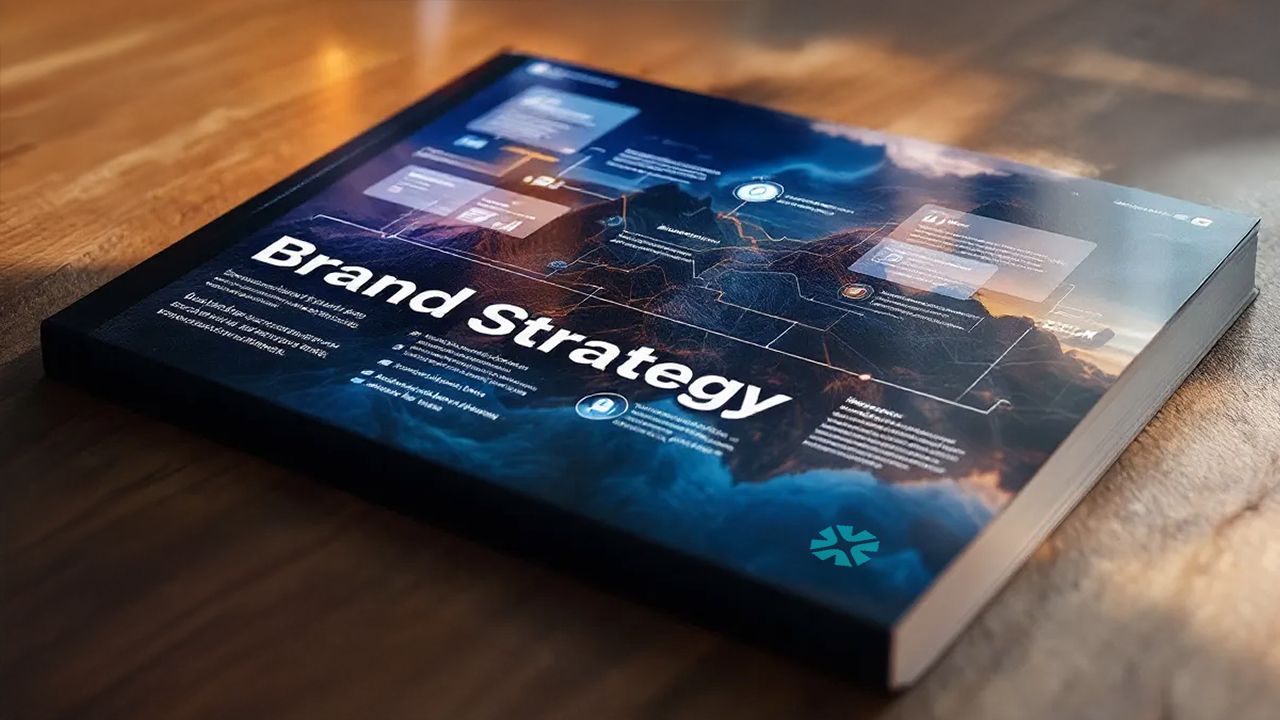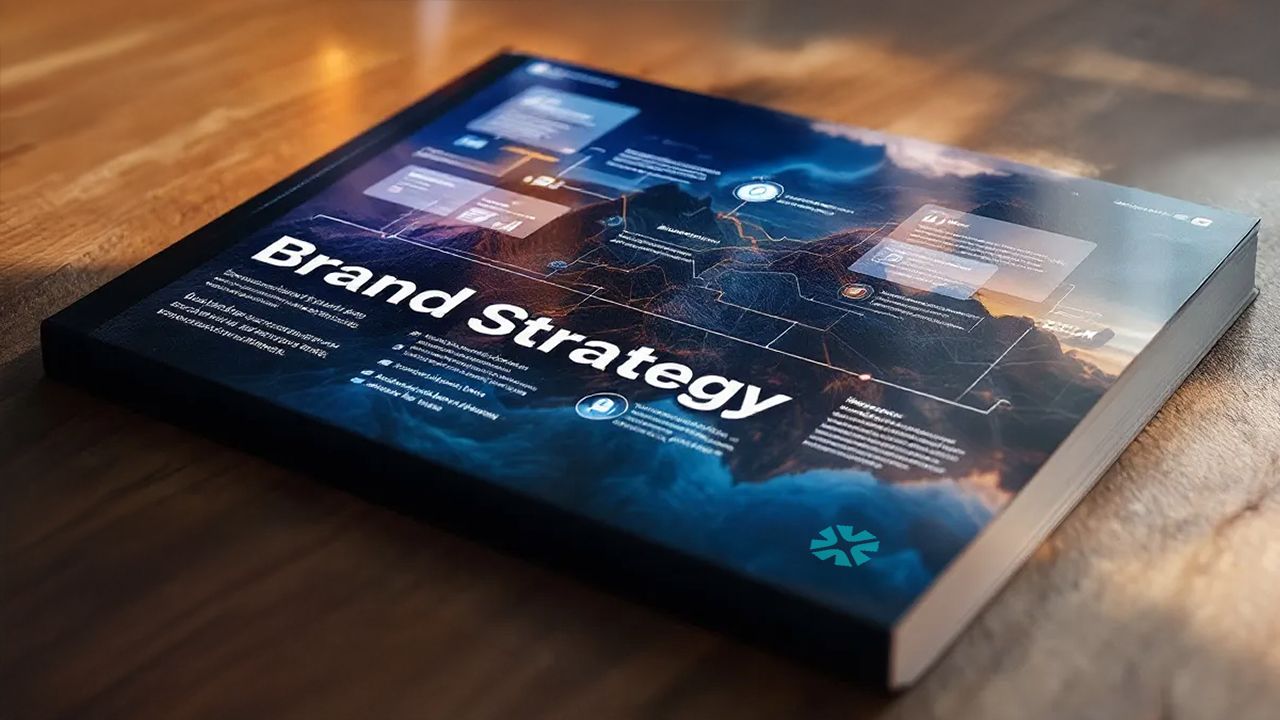Branding, for the longest time, was a word I tossed around with little ceremony—until a crime novel, curiously enough, upended everything I thought I knew about 'brand.' Let me share a small but pivotal story: A Monday morning, bleary-eyed at my desk, I picked up Dorothy Sayers' 'The Mind of the Maker,' expecting a bit of literary theology. Instead, I stumbled onto the blueprint for understanding brands, creativity, and—believe it or not—the divine. Fasten your seatbelt because we're about to connect brands, God, and a bit of poetic madness.
Metaphors: The Secret Sauce Behind How We Understand Brands
Ask a group of people to define a brand, and you’ll get wildly different answers. I’ve been there—once, at a dinner party, I tried to explain what a brand really is. I ended up more confused than when I started. Why is this so hard? The answer, I’ve come to realize, is metaphor. Metaphors aren’t just a way to spice up language; they’re the mental scaffolding we use to make sense of complex ideas like Brand Strategy, Brand Voice, and Brand Story.
Raymond Gibbs, a professor emeritus in Psychology at UCSC, puts it bluntly:
‘Metaphor is so pervasive, we’re blind to it,’he says. ‘Even when people don’t think they’re doing it, they’re doing it. You can’t help it.’ Research shows that metaphors are not decorative—they literally shape our thought processes. When we talk about a brand’s “personality” or “story,” we’re leaning on metaphors to make the abstract concrete. This is why terms like Brand Purpose and Brand Messaging resonate: they tap into familiar mental models.
But here’s the catch: bad metaphors lead to muddled Brand Strategy. If you see your brand as a “machine,” you’ll focus on efficiency and output. If you see it as a “community,” you’ll prioritize connection and belonging. The metaphors you choose for your brand aren’t just words—they’re the foundation of your Brand Identity Design and the vibe you project to your audience. Get the metaphor wrong, and your team and customers end up confused. I’ve seen brands try to be everything at once—hero, friend, innovator, rebel—and end up with messaging that feels scattered and inconsistent.
Gibbs goes further, arguing that “human cognition is fundamentally shaped by poetic processes.” That means our experience of reality—brands included—is filtered through metaphor. Describing life as a journey changes how we approach challenges; describing a brand as a guide or companion changes how we build Brand Voice and Brand Story. Studies indicate that clarity in Brand Messaging comes from using metaphors that everyone understands and relates to.
Sometimes, it feels like branding is just metaphor overload. Are we complicating things? Maybe. But embracing the right metaphors can bring unexpected benefits. They help teams align on Brand Purpose, sharpen Brand Strategy, and create messaging that actually resonates. In the end, metaphor isn’t just the secret sauce—it’s the main ingredient in how we understand and experience brands.
Cracking the Code: What The Trinity and Brands Have in Common
Ask a group of people what a brand is, and you’ll get a mix of answers. For a long time, I thought this confusion was just the result of branding jargon. But my perspective changed after reading Dorothy Sayers’ The Mind of the Maker. Sayers, a friend of C.S. Lewis and J.R.R. Tolkien, was known for her crime novels, but it was her exploration of the Holy Trinity and creativity that caught my attention. She made a creative leap: using the Trinity as a lens for understanding the process of making art—and, as I discovered, building brands.
Sayers describes every act of creation as threefold: Idea (the Father), Activity (the Son), and Power (the Spirit). She writes,
In The Mind of the Maker, Dorothy Sayers contends that the creative process in art works in ways that correspond to the dynamic relation among the three Persons of the Trinity in Christian theology.
This framework stuck with me. The more I thought about it, the more I realized it could explain why brand strategy is so misunderstood. Sitting at my desk, I had a lightbulb moment: brands, like art (and even theology), have three distinct layers. I started sketching out a triune model for brands:
- Brand-as-Idea: The core concept or purpose behind the brand. This is what the founder wants the brand to stand for—its mission, vision, and core brand values. Think of Apple’s original idea: making technology accessible and empowering for everyone. Without a strong idea, a brand lacks direction and purpose.
- Brand-as-Identity: The physical and visual elements—logo, colors, messaging, and tone—that bring the idea to life. This is where brand identity design comes into play, shaping how the brand is seen and experienced. Consistency here is crucial; research shows that successful brands like Apple rely on a unified identity to build trust and recognition.
- Brand-as-Image: The perception that lives in the minds of customers and the public. It’s not just what you say, but how your brand is experienced and remembered. This is where the brand story and emotional connection take shape, turning products into personal experiences.
At first, I was skeptical. Could a theological metaphor really help business founders? But the parallels are surprisingly useful. When these three brand elements—idea, identity, and image—are in harmony, a brand becomes more than a logo or a tagline. It becomes a living, memorable presence in the market, shaped by both intention and perception.
Brand-as-Idea: The Invisible Blueprint
When we talk about Brand Strategy, it’s easy to jump straight to logos, colors, or catchy taglines. But at the core of every successful brand is something less visible, yet far more powerful: the Brand-as-Idea. This is not just about ambition or a mission statement. It’s the owner’s vision—what the brand truly seeks to be. Think of it as the invisible blueprint, quietly shaping every decision and every interaction.
Let’s take a step back. Picture L.L. Bean in 1912. The brand’s story didn’t start with a slick marketing campaign. It started with a simple idea scribbled on a napkin: make durable, lightweight boots for outdoorsmen, and guarantee full customer satisfaction. That single, clear Brand Idea became the North Star for everything that followed. It wasn’t about the logo or the store layout—it was about a promise and a purpose.
Or consider Steve Jobs and Apple. Jobs wasn’t just selling computers; he was driven by the idea of making technology easy to use for everyone. “The success of your brand relies in great part on the strength of your idea.” Without that clarity, Apple’s identity would have fallen flat. The Brand Purpose—empowering regular people through technology—guided every product, every ad, every keynote.
But here’s the reality: not every founder knows their brand’s “why.” Many skip this step, rushing into design or messaging without a solid foundation. The result? Confusion—both inside the company and out in the world. Employees pull in different directions. Customers can’t quite put their finger on what makes the brand special. Research shows that brand story and brand purpose are foundational elements of Brand Strategy. Without them, consistency crumbles, and the rest of the brand falls apart.
When the Brand-as-Idea is weak or undefined, identity and image become muddled. It’s like building a house without a blueprint; the structure might stand, but it won’t feel right. That’s why strategy work should always start with sharpening the Brand Idea. Before you pick colors or design a logo, ask: What do we stand for? What’s our story? What values drive us?
In the end, Brand-as-Idea is the North Star of your Brand Strategy, guiding every other element—from Brand Values to Brand Story. Get this right, and everything else falls into place. Get it wrong, and even the best design can’t save you.
Brand-as-Identity: Your Brand in the Flesh (or Logo, Colors, and All the Details)
When most people talk about brands, what they’re really picturing is the Brand Identity—the visible, tangible parts like the logo, color palette, fonts, and even the way a brand sounds or feels in communication. As one designer put it,
“When most designers talk about brands, they’re actually referring to brand identities.”This is the part of branding that you can see, touch, and interact with. It’s the store you walk into, the packaging you open, the website you scroll through, and the tone you hear in every email or social post.
In my own work, I’ve fallen into the trap of obsessing over a logo or a color scheme, thinking that nailing the visual identity would solve everything. I remember spending weeks perfecting a logo for a client, only to watch the brand fizzle out because the core idea behind it wasn’t strong. It was a classic case of mistaking the “incarnation” for the whole story. The logo looked great, the brand design was on point, but without a clear Brand Idea, it just didn’t stick in people’s minds.
This is the tricky part: Brand Identity is the incarnation of your brand, the proof that your idea exists in the real world. But it’s not the whole picture. Research shows that visual identity—including logos, fonts, colors, and language—are all essential brand elements, but they must connect back to the core idea. If they don’t, even the most beautiful identity can be forgettable. I’ve seen brands with stunning visual identities that failed to make an impact because the underlying idea was weak or unclear.
Another common issue is “off-brand” design. When the elements of your brand—maybe a new font, an ad campaign, or even a single Instagram post—don’t align with your established identity, it creates confusion. People start to wonder what you stand for, or worse, they forget you altogether. Consistency in Brand Identity is what builds recognition and recall over time.
So, what’s the best practice? Every element—colors, fonts, copy, even the way you answer the phone—should be aligned with your core Brand Idea. Brand Voice and Brand Elements aren’t just decoration; they’re the tangible expression of your positioning. Studies indicate that strong brand positioning is about more than just a slick logo; it’s about how everything works together to reflect your purpose and values.
In the end, Brand-as-Identity is crucial, but it must always reflect the core Brand-as-Idea for people to remember you. The details matter, but only when they’re working in harmony with the bigger picture.
Brand-as-Image: What They Remember When Your Back Is Turned
When I think about Brand-as-Image, I’m reminded that a brand isn’t just what I say it is—it’s what people remember when I’m not in the room. Marty Neumeier summed it up perfectly:
Your brand is not what you say it is; it’s what they say it is. —Marty Neumeier
This idea is at the heart of brand perception. The image of a brand is the lasting impression left in someone’s mind after every interaction, big or small. It’s the sum of every message, every visual, every customer service moment. In practice, this means that brand messaging and identity work together to create something that lives independently in the minds of customers.
I saw this play out recently when a friend shared two wildly different takes on the same brand in a single week. One person described the brand as “innovative and caring,” while another called it “out of touch and confusing.” Both had interacted with the same company, but their experiences—and the resulting images—were completely different. This is a reminder that brand perception is co-created. It’s not something a business can engineer in isolation.
Research shows that brand effectiveness evaluation hinges on customer loyalty and brand perception. If people don’t connect with the image your brand projects, loyalty suffers. A brand that ignores its image risks becoming lifeless—just another corporate entity that nobody feels attached to. I’ve seen brands with a clear idea and a polished identity still fall flat because they didn’t consider the image they were creating in the customer’s mind.
It’s tempting to focus only on the internal side—your brand strategy, your values, your mission. But the truth is, the brand-as-image is shaped by how your idea and identity are received. You can’t control every perception, but you can strive for harmony. The real challenge is holding your brand idea, identity, and desired image together in a delicate balance.
- Brand-as-Image is the cumulative impression—what sticks after every touchpoint.
- It’s shaped by both your intentions and your audience’s experiences.
- Ignoring this aspect leads to brands that feel empty or disconnected.
In the end, brand perception is what drives customer loyalty and determines whether your brand stands out or fades away. The image you leave behind is, in many ways, your brand’s true legacy.
When the Brand Trinity Falls Out of Tune: Real-World Cautionary Tales
Brand Strategy is often described as a delicate balance between Brand Idea, Brand Identity, and Brand Image. But what happens when these three elements fall out of sync? In my experience, the result is chaos—confusion for customers, forgettability in the market, and a lack of trust that’s hard to recover from. As I’ve learned, “If your Brand-as-Idea is weak, your brand will end up all over the place.”
Literary Analogy: The Book with Great Style but No Soul
Think of a book with beautiful prose but no real story. It might look impressive on the outside, but it leaves readers cold. In branding, this is like having a stunning Brand Design and polished Brand Identity, but no clear Brand Idea behind it. The result? A brand that feels hollow—style without substance. On the flip side, a strong idea with poor execution is like a brilliant story told in awkward, unreadable language. Both scenarios fail to connect.
My Failed Project: When Visions Clash
I once worked on a brand launch where the founders couldn’t agree on the core Brand Idea. The Brand Identity was bold and modern, but the messaging was all over the place. Our Brand Perception in the market? Confused. Customers didn’t know what to expect, and the launch fizzled. This experience taught me that even the best Brand Design can’t save a brand when its foundation is shaky.
Checklist: Spotting a Disjointed Brand
- Mixed messages across channels
- Visuals and tone that don’t match the brand’s stated values
- Customer feedback that highlights confusion or lack of trust
- Low brand recall or mistaken identity with competitors
Research shows that evaluating all three brand layers—Idea, Identity, and Image—helps pinpoint where your Brand Strategy is breaking down. This Brand Effectiveness Evaluation is essential for course correction.
Brands in the Wild: Off-Brand Moments Gone Viral
We’ve all seen brands go viral for the wrong reasons. Maybe it’s a luxury brand using memes in a way that feels forced, or a heritage brand suddenly adopting a neon logo. These “off-brand” moments are symptoms of misalignment. They’re memorable, but not in a good way.
Wild Card: The AI Brand with No Purpose
Imagine an AI-powered brand that optimizes every touchpoint for engagement, but forgets why it exists. The Brand Identity is flawless, the Brand Perception is data-driven, but the Brand Idea is missing. Without purpose, even the most advanced Brand Strategy falls flat.
Practical Magic: Creating a Brand That Actually Works (and Sticks)
When it comes to Brand Strategy, there’s no shortcut or secret formula—just a set of principles that, when followed, can transform a business from forgettable to unforgettable. Over time, I’ve learned that building a brand is less about chasing trends and more about getting the fundamentals right. It’s about clarity, consistency, and connection. These three rules are the practical magic behind every strong Brand Identity and Brand Story.
First, get clear. This means defining your Brand-as-Idea with intention, even if you’re a solo founder or a small team. What do you want your brand to stand for? What values are non-negotiable? Research shows that a successful Brand Strategy starts with a clear sense of purpose and values, which then guide every decision you make. If your idea is muddy, your brand will feel scattered—internally and externally.
Second, get consistent. Your Brand Identity is the visible expression of your idea. It’s more than a logo or a color palette; it’s how your brand shows up in the world, from your website to your customer service emails. Consistency here is key. Studies indicate that brands with a unified identity—where visuals, voice, and messaging all align—are more likely to be recognized and trusted. But don’t fall into the trap of designing just to look trendy. Instead, let your Brand Identity embody your core idea and values, so every touchpoint reinforces what you stand for.
Third, get connected. This is where Brand-as-Image comes into play. It’s not just about what you say; it’s about how your brand is experienced and remembered by others. Internal and external alignment matters. If your team doesn’t believe in your Brand Values, or if your messaging feels disconnected from your actions, your audience will sense it. Infusing your brand with meaning—making sure your story resonates both inside and out—creates the emotional connection that turns casual customers into loyal advocates.
So, what can you do right now? Audit your brand trinity: idea, identity, image. Ask yourself—are they in harmony, or is something out of sync? Clarify your core idea, align your identity to reflect it, and check if the image you project matches your intentions. This process isn’t a one-time fix; it’s ongoing. Audit, clarify, align, and repeat.
Do them well, and your brand will be unforgettable.
In the end, building a brand that works—and sticks—requires intentional, ongoing attention to all three aspects. When values, identity, and messaging are harmonized, your brand doesn’t just exist. It resonates.
TL;DR: Brands, much like books and the Holy Trinity, are multi-layered: there's an idea, a tangible identity, and ultimately an image in the mind of your audience. To build a truly unforgettable brand, keep all three in harmony—and don't shy away from metaphors.



